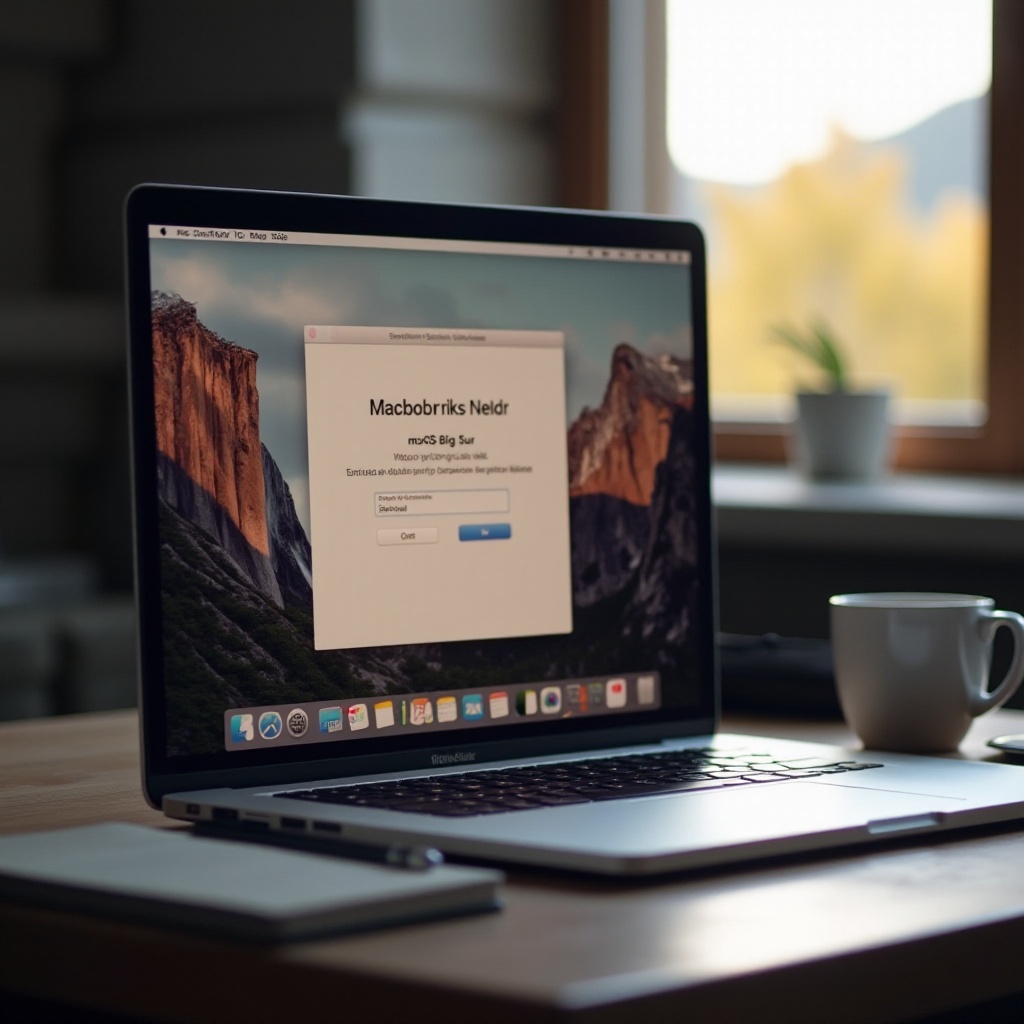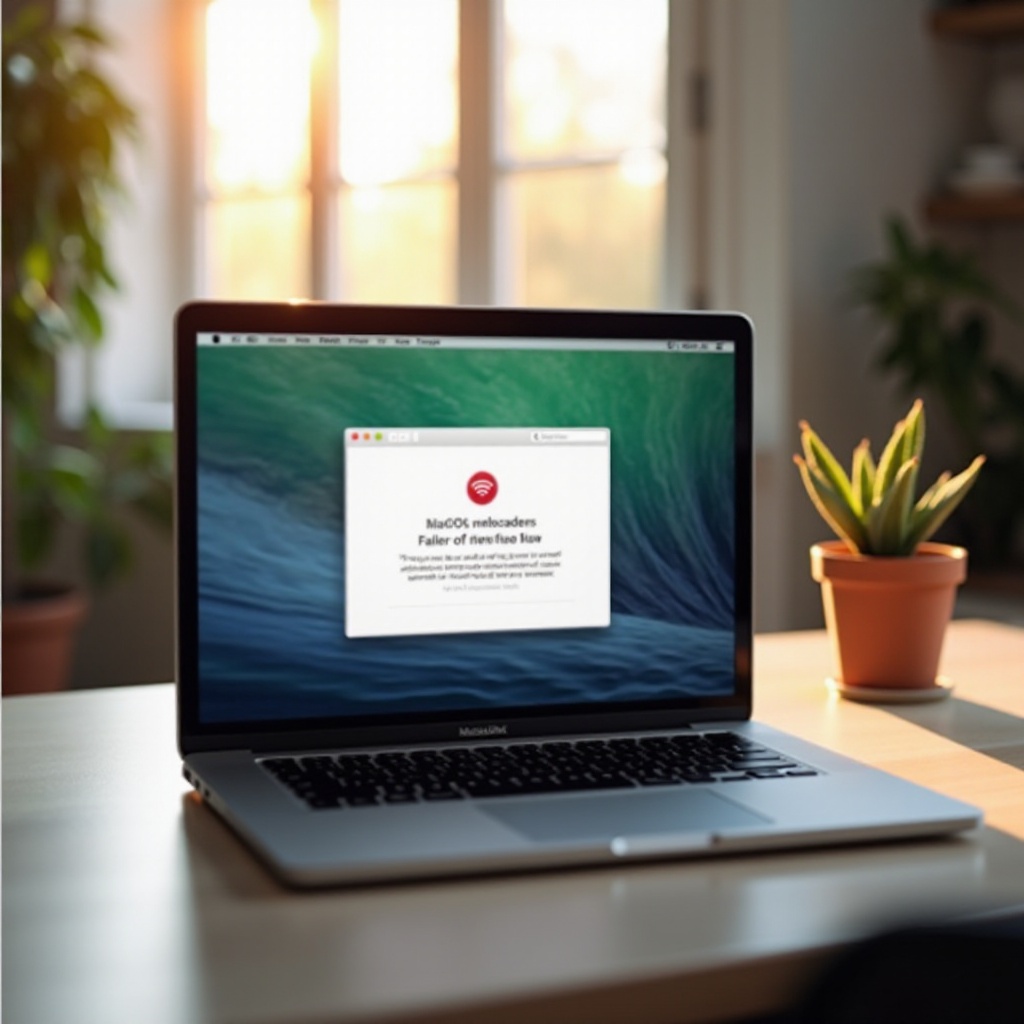Introduction
Apple’s macOS Big Sur brought significant changes and improvements to the MacBook Pro. However, some users have encountered difficulty updating their device after installing this major update. Understanding why your MacBook Pro won’t update and knowing how to address the issue is essential for maintaining your device’s performance and security.
Various factors could be causing your update problem, from hardware compatibility to system storage constraints. This detailed guide takes you through analyzing your MacBook’s ability to receive updates, steps to resolve potential hindrances, and advanced troubleshooting techniques. Let’s start by exploring some primary causes and solutions.

Checking Hardware Compatibility
Ensuring your MacBook Pro’s compatibility with the latest macOS versions is the first step when facing update issues. Every macOS release has specific system requirements, and meeting these specifications is crucial for the update to proceed.
- Verify Your MacBook Model: Go to the Apple menu, select ‘About This Mac,’ and check your model and year.
- Compare Requirements: Visit Apple’s official macOS support page to compare your model against the requirements for the latest update. Model compatibility is crucial as older hardware might not support newer features.
- Update Eligibility: If your MacBook Pro is several generations old, it might not be eligible for the latest macOS updates due to its hardware limitations.
If your MacBook meets the necessary criteria, hardware compatibility isn’t what’s preventing the update. Let’s ensure your device has enough space for the installation.
Freeing Up Storage Space
macOS updates require ample space to download and install properly. Insufficient storage might be hindering your MacBook’s ability to update.
- Check Available Space: Open ‘About This Mac,’ go to the ‘Storage’ tab, and view the available storage.
- Free Up Space: If storage is low, consider deleting unnecessary files, uninstalling unused applications, or transferring data to an external drive.
- Clean System Files: Utilize macOS’s built-in storage management tools or a third-party program to clean cache files, system junk, and old backups.
Ensuring adequate storage space helps facilitate smooth updates. Next, let’s explore the importance of a stable internet connection—a vital part of downloading and installing updates.
Ensuring Stable Internet Connection
A stable internet connection is critical for downloading macOS updates. Interrupted connections can lead to incomplete downloads and update failures.
- Check Your Connection: Ensure you have a strong and stable internet connection. Wi-Fi signal strength should be robust, and switching to a wired Ethernet connection can sometimes help.
- Network Issues: Reset your modem or router if you experience slow or unstable connections. Alternatively, connect to a different network to rule out issues with your primary network.
A good, uninterrupted connection ensures smooth downloading and installing of updates. Even with a reliable connection, software conflicts might still arise. Let’s delve into handling software-related issues next.

Software Conflicts and Updates
Software conflicts might result in update problems. Ensuring both macOS and third-party applications are up to date can resolve these conflicts.
- Update Existing Software: Before initiating a macOS update, update all installed applications from the Mac App Store or manually from the developer’s website.
- Conflicting Software: Address potential conflicts by checking for compatibility issues with recent app installs. Uninstalling or disabling some applications temporarily might resolve update problems.
- Outdated System Components: Outdated firmware or drivers can also cause conflicts. Ensuring they are updated can smooth the update process.
If software conflicts are resolved yet the issue persists, booting into Safe Mode or using Recovery Mode might offer a solution.
Safe Boot and Recovery Mode Options
Booting your Mac in Safe Mode or using Recovery Mode can differentiate software-induced issues and assist in resolving update problems.
- Safe Boot: Restart your Mac and hold down the Shift key. Safe Boot loads minimal application startup components, which can help verify if a software conflict is causing the update failure. If it boots correctly, try updating the system under Safe Boot.
- Recovery Mode: Restart your Mac and hold Command and R keys until the Apple logo appears. In Recovery Mode, you can reinstall macOS or run Disk Utility to repair any disk issues that might be hindering the update process.
These modes are effective in diagnosing and solving specific problems. Lastly, if traditional methods fail, Terminal commands offer a powerful alternative.
Updating via Terminal Commands
For advanced users, Terminal commands provide a methodical approach to initiate macOS updates.
- Open Terminal: Locate and open Terminal via Spotlight Search or Applications.
- Execute Update Commands: Use commands such as
softwareupdate -lto list available updates. Once listed, usesoftwareupdate -i NameOfUpdateto install the desired update. These commands can sometimes bypass issues from the standard update process.
Terminal commands offer a powerful way to force updates, which can resolve persistent issues not addressed through standard methods.

Conclusion
Troubleshooting why your MacBook Pro won’t update after macOS Big Sur involves exploring and resolving potential hardware, software, and connectivity issues. Ensuring adequate storage, stable internet, up-to-date software, and advanced troubleshooting techniques like Safe Mode or Terminal commands are key solutions. If issues persist, contacting Apple Support may be necessary.
Frequently Asked Questions
Why does my MacBook Pro say it’s not compatible with the update?
Your device might be too old or lacks specific hardware requirements needed for newer macOS versions. Verify compatibility on Apple’s support page.
How can I fix the problem of my MacBook Pro running out of storage for updates?
Free up space by deleting unnecessary files, uninstalling unused apps, and using storage management tools to clear system junk and caches.
What should I do if my MacBook Pro update keeps failing even after trying all the troubleshooting steps?
If all else fails, consider rebooting in Safe Mode or using Recovery Mode to address the issue. As a last resort, contact Apple Support for professional assistance.